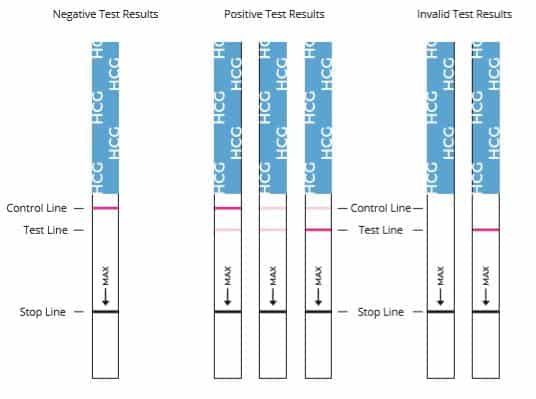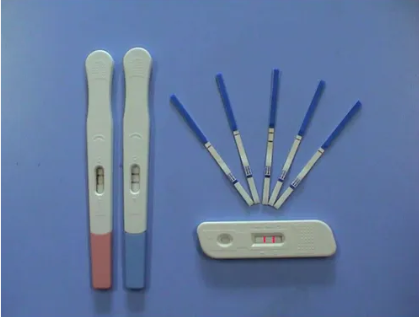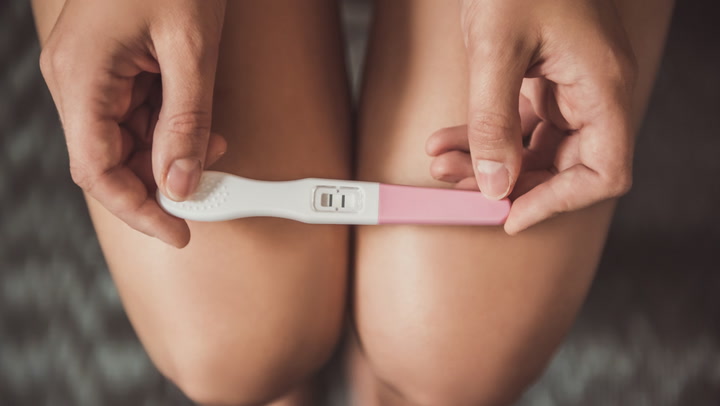
Are you experiencing missed periods, tender breasts, or unusual food cravings?
Whether you're actively trying to conceive or suspect you might be pregnant, a pregnancy test strip can be a readily available tool to help you find out.
These handy little strips offer a quick and convenient way to detect the presence of a pregnancy hormone in your urine. But with so many options on the market, how do you choose the right one, and what are their pros and cons? This guide will help you understand.
READ ALSO: 10 early signs of pregnancy after a missed period
Types of pregnancy test strips
There are three types of home pregnancy test strips available:

1. Standard pregnancy test strips
These are the most common type. They typically consist of a paper or plastic strip with an absorbent tip and a control line and a test line. The control line confirms the test is working correctly, while the test line indicates the presence of the pregnancy hormone, human chorionic gonadotropin (hCG).
2. Digital pregnancy test strips
These strips work similarly to standard strips, but they display the results digitally (usually Pregnant or Not Pregnant) on a small screen. This can be easier to interpret for some people.
3. Early detection pregnancy test strips
These strips claim to detect pregnancy earlier than standard strips, sometimes as early as 6-7 days after ovulation. However, the accuracy might be lower at such an early stage.
Using pregnancy test strips

- Read the instructions carefully: Each brand might have slight variations in how to use their specific test strip.
- Identify the test and control lines: Familiarise yourself with where these lines are located on the strip.
- Collect your urine sample: Most tests recommend using the first morning urine for the most concentrated results.
- Dip or hold the strip: Depending on the test, you might need to dip the absorbent tip directly into the urine stream for a few seconds or hold the tip in the urine flow.
- Wait for the results: The instructions will specify the wait time, which is usually around 3-5 minutes. During this time, the test strip is working its magic, detecting the presence or absence of hCG.
- Read the results: Two lines generally indicate pregnancy, while one line (the control line) signifies a negative result.

READ ALSO: How to check pregnancy at home naturally: 5 DIY methods
Advantages of using pregnancy test strips
- Convenience: Test strips are readily available at drugstores, grocery stores, and online retailers. You can take a test at home in complete privacy.
- Affordability: Compared to other pregnancy testing methods like blood tests at a doctor's office, test strips are a very cost-effective option.
- Quick results: Most test strips provide results within minutes, giving you a fast answer to your question.
- Easy to use: The testing process is generally straightforward and requires minimal instructions.
Disadvantages of using pregnancy test strips
- Accuracy: While most pregnancy test strips are highly accurate (over 99%) when used correctly, there's always a small margin of error. Early detection tests might be less accurate.
- User error: If you don't follow the instructions precisely, you might get an invalid result.
- False positives: Certain medical conditions or medications can trigger a false positive result.
- False negatives: Testing too early after ovulation or using diluted urine can lead to a false negative. For the most accurate results, it's best to follow the recommended timeframe for testing.
- Emotional impact: Seeing a positive or negative result can be emotionally charged. A healthcare professional must confirm a test strip result.
When to take a pregnancy test
The best time to take a pregnancy test depends on your individual circumstances. However, here are some general guidelines:
- Missed period: If you've missed your period and are experiencing pregnancy symptoms, taking a test after a day or two of your missed period can be effective.
- Early detection: Some tests claim to detect pregnancy as early as 6 days before your expected period. However, the accuracy might be lower at this stage, so waiting a few days can increase the reliability of the results.
- Uncertain cycle: If your menstrual cycle is irregular, consulting a doctor for a blood test might be a better option for early detection.
Pregnancy test strips can be a helpful tool, but they aren't foolproof. If you suspect you might be pregnant, regardless of the test result, it's crucial to schedule an appointment with your doctor for confirmation
This content was created with the help of an AI model and verified by the writer.
Read Full Story

























Facebook
Twitter
Pinterest
Instagram
Google+
YouTube
LinkedIn
RSS